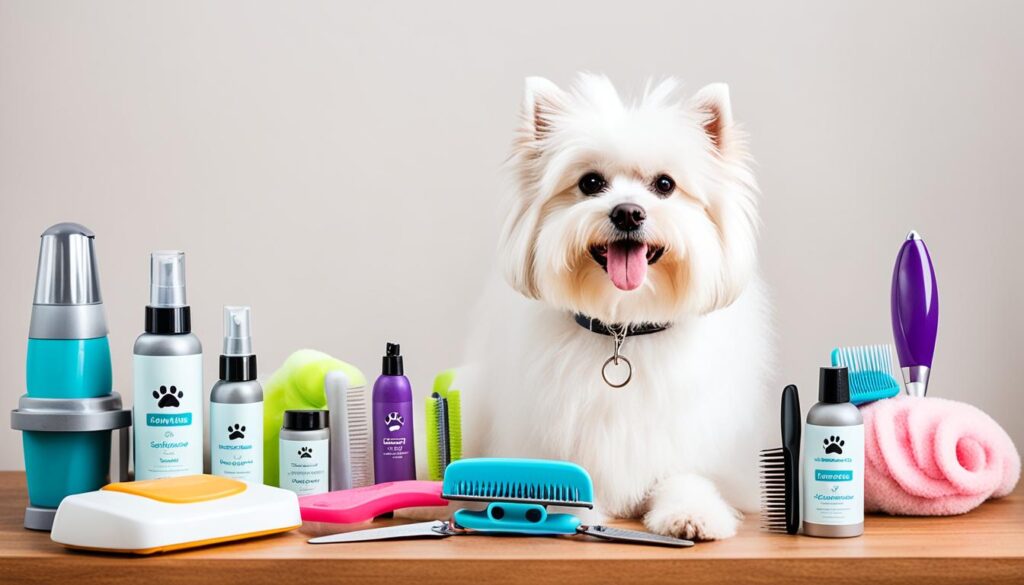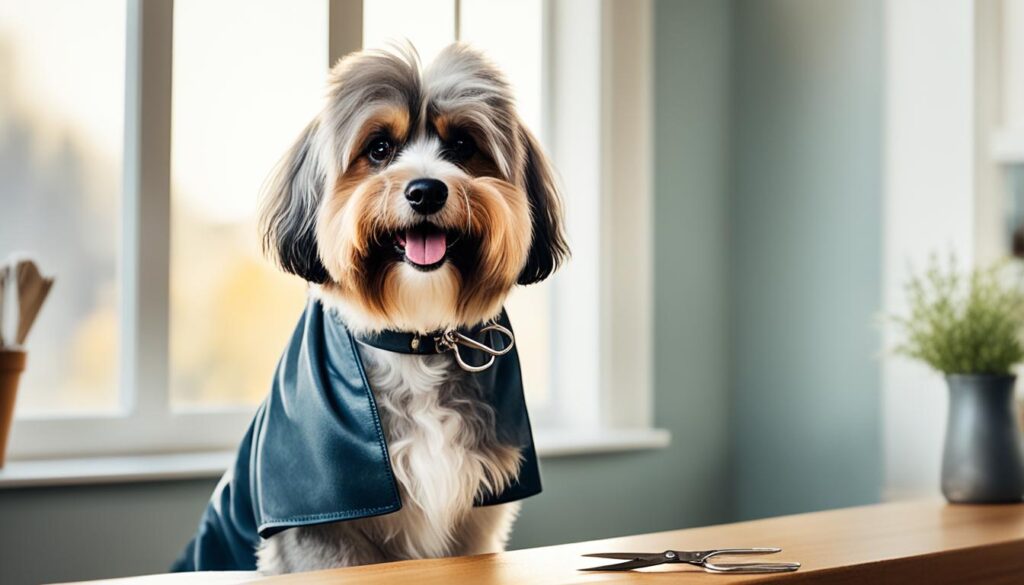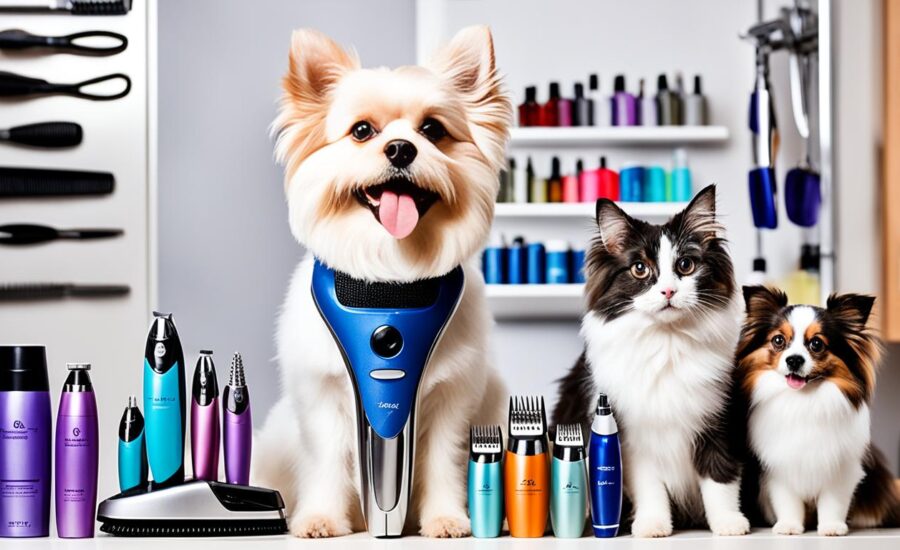DIY pet grooming is now a big deal, with many opting to stay home. You can give your pet cozy grooming sessions without leaving your house. This guide shows you how to keep your pet looking great and strengthen your bond.
Trimming your pet at home is more than just a need. It’s a way to make great memories. Let’s find out how.
Starting DIY pet grooming may feel hard for new pet owners. But, it shows your deep love for your pet. It builds trust, making your bond stronger.
Let’s learn how to pick the right tools and give a safe grooming session. You can be the best stylist for your pet, offering them the comfort they deserve.
Key Takeaways
- Learn the basics of how to safely introduce your pet to grooming at home.
- Discover the proper use of DIY pet grooming tools tailored to your pet’s needs.
- Uncover essential pet grooming tips to make the process enjoyable for you and your fur baby.
- Understand the importance of regular pet care routines in strengthening your bond with your pet.
- Get a step-by-step guide on managing and maintaining your pet’s hygiene at home.
Understanding the Basics of DIY Pet Grooming
Starting your DIY pet grooming journey requires knowledge and the right tools. It begins with knowing what your pet needs. Pets have different types of coats, ranging from short and smooth to long and luxurious. The key is to choose DIY Pet Grooming Supplies that match your pet’s coat type and grooming needs.
With the basics, pet owners can turn their homes into a grooming heaven. Here are the supplies needed for each coat type:
| Coat Type | Brush Type | Shampoo | Additional Grooming Tools |
|---|---|---|---|
| Short & Smooth | Bristle brush | Mild, hypoallergenic | De-shedding tool |
| Long & Silky | Pinning brush | Moisturizing or detangling | Steel comb, scissors |
| Curly | Slicker brush | Curl-enhancing or hydrating | Wide-toothed comb, clippers |
| Double-Coated | Undercoat rake | De-shedding specific | Mat splitter, grooming gloves |
These tools help you achieve a salon-quality look at home. Regular grooming makes your pet look and feel great. It is about using the right DIY Pet Grooming Supplies and techniques for your pet ‘s coat.
Learning the grooming process is crucial too. This includes brushing skills and bathing without stress. Keep grooming regular and systematic. This approach makes grooming easy and enjoyable for you and your pet.
By learning and using the right DIY Pet Grooming Supplies, you can improve your pet’s looks and health. The care you show during grooming strengthens your bond. It turns grooming times into moments of trust and friendship that last forever.
Essential Pre-Grooming Preparation Tips for Your Pet’s Comfort
Getting ready for a DIY pet grooming session is more than just gathering tools. It involves understanding your pet’s needs and creating a calm space. These steps ensure a smooth grooming process and a happy pet.
Identifying Your Pet’s Coat Type
It’s key to know your pet’s coat type before grooming. Different coats need different brushes and care. For example, double-coated dogs need de-shedding tools, while silky coats need gentle brushes. It’s the first step in picking the right grooming methods.
Grooming Tools and Supplies Checklist
Creating a list of grooming tools and supplies helps make the process smooth. You’ll need everything from clippers to shampoos. Here’s a list of essentials to start with:
| Tool/Supply | Purpose | Coat Type |
|---|---|---|
| Brushes and Combs | Detangling and smoothing fur | Varies |
| Clippers | Maintaining coat length | Medium to long coats |
| Scissors | Trimming sensitive areas | All types |
| Nail Clippers | Keeping nails short | All types |
| Shampoo | Cleaning the coat and skin | All types |
| Towels | Drying after a bath | All types |
Creating a Stress-Free Grooming Environment
Choose a quiet space for grooming to make your pet comfortable. Have all supplies ready and minimize distractions. Use treats and praise to build a positive grooming experience. This approach makes grooming pleasant and reduces your pet’s stress.

Step-by-Step Guide to Brushing and Bathing Your Pet
Becoming good at DIY pet grooming means learning about your pet’s coat needs. Whether it’s a Spaniel’s silky fur or a Husky’s thick coat, knowing how to groom them is key. This guide will show you how to make pet grooming easy and enjoyable for both you and your pet.
Techniques for Different Coat Types
Bathing and brushing are key for DIY grooming, but not all pets are the same. Your pet’s fur type determines the right grooming method. We’re here to help you keep your pet looking great.
- For short-coated pets, brush once a week with a bristle brush. This removes loose hair and spreads natural oils.
- Long-coated pets may need daily care with a slicker brush or dematting tool to avoid tangles and mats.
- For curly coats, use a comb and detangling spray. This helps manage curls without causing discomfort.
Brushing your pet before a bath is important. It gets rid of mats and makes bath time easier and less stressful.
Tips for a Smooth and Safe Bathing Experience
Bath time can be messy, but it doesn’t have to be stressful. It can be a chance to bond with your pet. Here’s how:
- Start by thoroughly brushing your pet to remove dirt and loose fur.
- Use lukewarm water, and be careful around the eyes and ears.
- Pick a shampoo that’s safe for your pet’s coat and skin.
- After rinsing, gently dry your pet with a microfiber towel.
- If your pet isn’t scared of noise, you can use a hair dryer on low. Always check the air temp to keep your pet comfy.
Every pet is different, so watch their reactions and adjust as needed. This helps make grooming a positive experience for them.
Using these grooming tips will not only keep your pet clean but also strengthen your bond. A clean, mat-free coat is crucial for your pet’s health and happiness.
DIY Pet Grooming: How to Give Your Pet a Trim
Learning how to trim your pet at home can help you bond and keep them looking sharp. It’s not just for looks, though. It’s crucial for their comfort and health. With the right pet grooming tips, you don’t have to stress or make them uncomfortable to groom your pet like a pro.

Trimming Techniques for Facial Hair, Paws, and Body
To start with the face, lift the hair with a comb for better visibility during trimming. For the paws, trim the hair short between the pads to prevent dirt and reduce the risk of infection. When cutting body hair, use clippers with guide combs to keep hair even. Always trim following the hair growth to avoid pulling and ensure a smooth look.
Safety Precautions When Using Scissors and Clippers
When using scissors and clippers, always put safety first. Choose scissors with blunt ends for the face and neck to avoid cuts. Check the clippers’ blade temperature regularly to avoid burns. Do this by touching them to your wrist. Also, always cut away from the skin and keep the sharp ends away from your pet.
End grooming sessions positively to build trust and keep it stress-free for your pet. By focusing on their comfort, you’ll make them look great and ensure grooming is safe and fun. This will strengthen your bond and make grooming something you both look forward to.
Clipping Your Pet’s Nails Without the Stress
Starting DIY Pet Grooming at home is more than keeping your pet’s coat tidy. It also involves nail clipping, which is key. This step helps keep your pets looking good and feeling great. Overgrown nails can hurt their walk and posture.
If clipping nails feels scary, don’t worry. With the correct pet grooming techniques, you can do it easily and stress-free. Here’s a simple guide to help you:
- Get your pet used to having their paws touched. Touch and massage them gently and give treats when they let you.
- Show them the nail trimmer or grinder. Let them sniff it and turn it on so they’re not scared of the noise.
- Look for the quick – a pink area inside the nail – in pets with light nails. Don’t cut this part to avoid bleeding.
- Clip just a little bit off each nail end. After each nail, praise and treat your pet.
- If you accidentally cut the quick, use styptic powder to stop the bleeding.
Below, we compared different tools to help you choose the best one for your pet. We looked at comfort, control, and suitability:
| Type of Tool | Control Level | Comfort for Pet | Suitability |
|---|---|---|---|
| Standard Nail Clippers | High | Varies | Great for small to medium pets |
| Guillotine Clippers | Medium | Varies | Best for small pets |
| Grinders | Medium | High | Ideal for pets scared of clippers |
| Scissor Clippers | High | Low | Recommended for larger breeds |
With these DIY Pet Grooming steps, nail clipping will become easy. Remember, being patient, practicing, and giving lots of treats can make nail clipping a fun time with your pet.
Oral and Ear Care: Essential Aspects of Pet Grooming
Learning pet grooming tips is more than just taking care of their fur. It also involves taking care of their teeth and ears. Just like us, pets need regular dental care to avoid diseases. Their ears must be cleaned often to prevent infections. Let’s look at how to keep your pet’s teeth and ears healthy.
Effective Teeth Brushing Routines for Your Pet
Brushing your pet’s teeth is key in preventing dental problems. You should brush their teeth many times a week or even daily. Follow these steps for a safe and effective routine:
- Get your pet used to brushing by using gentle movements on their gums and teeth.
- Put a small amount of toothpaste meant for pets on a proper brush.
- Brush all teeth gently in circles, especially near the gums where plaque gathers.
- End with a treat to make it a positive experience for them.
Having the right DIY pet grooming supplies helps make teeth cleaning easier for both you and your pet.
How to Safely Clean Your Pet’s Ears
Ear cleaning is a must in pet grooming tips and your self pet grooming routine. Always look for signs of discomfort, redness, or bad smells to tackle problems early. Here’s how to clean your pet’s ears safely:
- Check your pet’s ears for too much wax or signs of infection.
- Choose a vet-approved ear cleaning solution made for pets.
- Put the solution on a cotton pad or ball. Then, gently clean the part of the ear canal you can see and the outer ear.
- Avoid putting anything deep in the ear canal to not cause harm.
| Supply | Description | Usage |
|---|---|---|
| Dog Toothbrush | Ergonomically designed to fit pet mouths. | Use with circular motions to clean teeth. |
| Pet Toothpaste | Enzymatic solutions that are safe for pets. | Apply pea-size amount for each brushing session. |
| Ear Cleaning Solution | Formulated for the gentle cleaning of pet ears. | Apply to ear area, wiping gently with a cotton ball. |
| Cotton Balls | Soft and absorbent for cleaning use. | For application of solution and cleaning outer ear. |
With the right care and DIY pet grooming supplies, you can keep your pet’s mouth and ears healthy. This will help them stay happy and well.
Conclusion
Diving into DIY Pet Grooming is not just about saving money. It’s also about building a stronger bond with your pet. Through our detailed series on self pet grooming, we’ve shown you how to safely and effectively care for your companion. Caring for our pets goes beyond just spending time with them. It means taking active steps to ensure their happiness and health. This commitment drives us to learn all the best grooming methods.
Having a good pet grooming tutorial means you can keep your pet looking and feeling great. A step-by-step pet grooming guide shows you how to groom with confidence. This could be learning how to brush them right or take care of their ears. Every step we take in learning how to better care for our pets shows our dedication to their well-being.
The path of DIY Pet Grooming is fulfilling. It lets us enjoy the visible benefits of a clean, groomed pet. By using treats and love, we make grooming a happy time, encouraging them and cutting down stress. As we wrap up, remember that being patient, practicing, and focusing on what your pet needs are key to great grooming. Cheers to strengthening the special bond with our pets through grooming.
FAQ
How can I identify my pet’s coat type for DIY grooming?
What supplies do I need for DIY pet grooming at home?
How can I create a stress-free grooming environment?
What are the best brushing techniques for my pet’s coat type?
How can I ensure a safe bathing experience for my pet?
What are the key trimming techniques for pets?
How can I safely use scissors and clippers when grooming my pet?
How often should I clip my pet’s nails?
Can you give tips for brushing my pet’s teeth?
How do I clean my pet’s ears safely?
Source Links
- https://www.petmd.com/dog/care/evr_dg_diy-tips-for-grooming-dog-at-home
- https://www.humanesociety.org/resources/how-groom-your-dog-home
- https://www.aspca.org/news/home-pet-grooming-top-tips-and-recommendations

